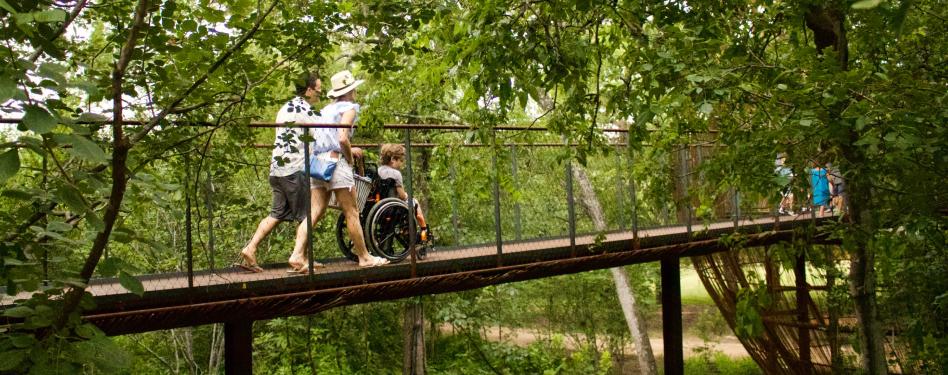
Feature image photo credit: Pease Park Conservancy.
"Arguably, land use controls have a more widespread impact on the lives of ordinary Americans than any other regulation." —Edward Glaeser, "Reforming Land Use Regulations," The Brookings Institution
Land use regulations
Land use in the United States is largely regulated at the municipal level. This dates back to the Supreme Court approval of comprehensive zoning in the 1920s.
Municipalities often face challenges in implementing landscape development regulations—even more so when they seek to integrate sustainable and resilient design strategies into those regulations. Towns and cities searching for a clear, replicable and verifiable approach to sustainable land development are increasingly incorporating SITES certification into their regulatory toolbox.
What is SITES?
The Sustainable SITES Initiative (SITES) is owned and administered by GBCI, the certifying body for the LEED rating system, which established the first baseline for green building standards. SITES offers a comprehensive rating system designed to guide, evaluate and certify a project’s sustainability in the planning, design, construction and management of landscapes and other outdoor spaces. It complements the LEED rating system, which is also used in many municipal regulatory standards.
SITES’ nature-based solutions and strategies promote biodiversity, conserve water and other resources, mitigate climate change, improve public health, and provide economic benefits in development projects.
Adoption of SITES
To date, SITES has identified
- Fifteen localities incorporating SITES into their local ordinances.
- Twelve additional localities adopting SITES in local or institutional policy and development guidelines.
- Two states that have adopted SITES through legislation or executive action.
- One occurrence of SITES adoption at the federal level.
As institutions and government entities across the world are increasingly turning their focus to sustainability, resilience and decarbonization strategies, landscapes are a powerful resource to support biodiversity, reduce risk from natural hazards and climate change impacts, reduce urban heat island effects, conserve water, and provide access to community spaces that improve human health and well-being.
A new resource, "Designing the Future: Incorporating SITES Into Sustainable Landscape Regulations," documents the progress made in order to provide ideas and inspiration for other institutions seeking to reinforce their own sustainability policies.
Ways to get involved
It is encouraging to see how many localities have embraced SITES in their land use framework—and these are just the ones we know about! Has your community interacted with SITES yet? There are many ways to get the conversation on sustainable land design and development started.
- Has SITES been adopted by your locality? Let us know so we can add it to our list!
- Would you like to work on encouraging your town or city to adopt SITES certification? We’d love to support you. Email us to start a conversation.
- Would you like to work toward the incorporation of SITES into your state’s Statewide Comprehensive Outdoor Recreation Plan (SCORP), as Texas has done? (See the “Sustainable Park Design” section starting on page 61.) The National Park Service manual for the federal Land and Water Conservation Fund requires “certification by the [g]overnor that ample opportunity for public participation has taken place in plan development,” in each state's SCORP.
Do you have other thoughts on how to encourage SITES adoption in your community? Contact us by email for more information.
